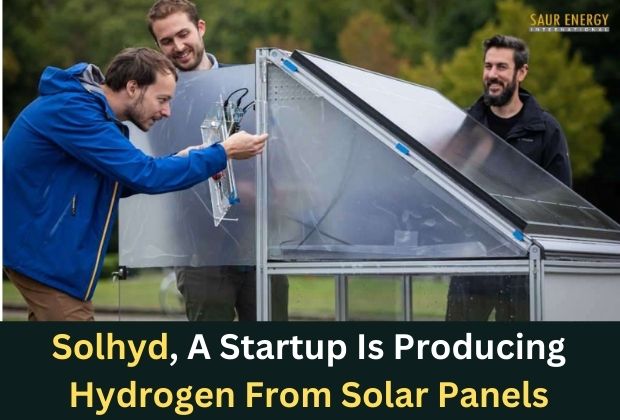What if we could produce hydrogen using PV solar panels? Sounds unbelievable, right?
Two bioscience engineers from the University of Leuven in Belgium claim to have developed a solar panel that can generate hydrogen using sunlight. According to their startup, Solhyd, these hydrogen panels produce hydrogen by capturing water from the ambient air. The startup has already secured €2 million in seed capital from four Flemish investors and the university’s Gemma Frisius seed capital fund.
How does the solar hydrogen panel work?
The Solhyd hydrogen panel differs from conventional PV panels and electrolyzers. In simple terms, it integrates a standard PV panel with an additional, specially designed layer to produce hydrogen. The process begins with the adsorption of water vapor from moist air—a task the material excels at, especially in humid conditions. The captured water vapor is stored within the panel. Adsorption refers to the ability of solid substances to attract molecules of gases or solutions to their surfaces.
During sunlight exposure, the panel’s photoelectrochemical cell decomposes the stored water vapor into hydrogen and oxygen gases.
Why does it matter?
The panel’s surface or membrane has the unique ability to collect and concentrate water vapor into the conversion cell. The patented membrane technology is what sets a Solhyd panel apart from a traditional PV panel. Interestingly, the PV panel’s top layer acts as a catalyst to break down the extracted air and water molecules. The entire process of collecting water vapor and performing electrolysis using solar energy is carried out independently within the standalone system, without relying on any external grid.
How efficient is Solhyd?
A single module can produce approximately 6 kg of hydrogen annually in the northwestern European climate. In sunnier regions, the output could increase to as much as 12 kg per module per year. For a roof installation half the typical size, consisting of 20 hydrogen panels, the annual production could range between 120 kg and 240 kg of hydrogen, equating to about 4 MWh to 8 MWh of hydrogen energy. The panels operate with a peak efficiency of 15%, with a real-world efficiency target of 12% or higher.


